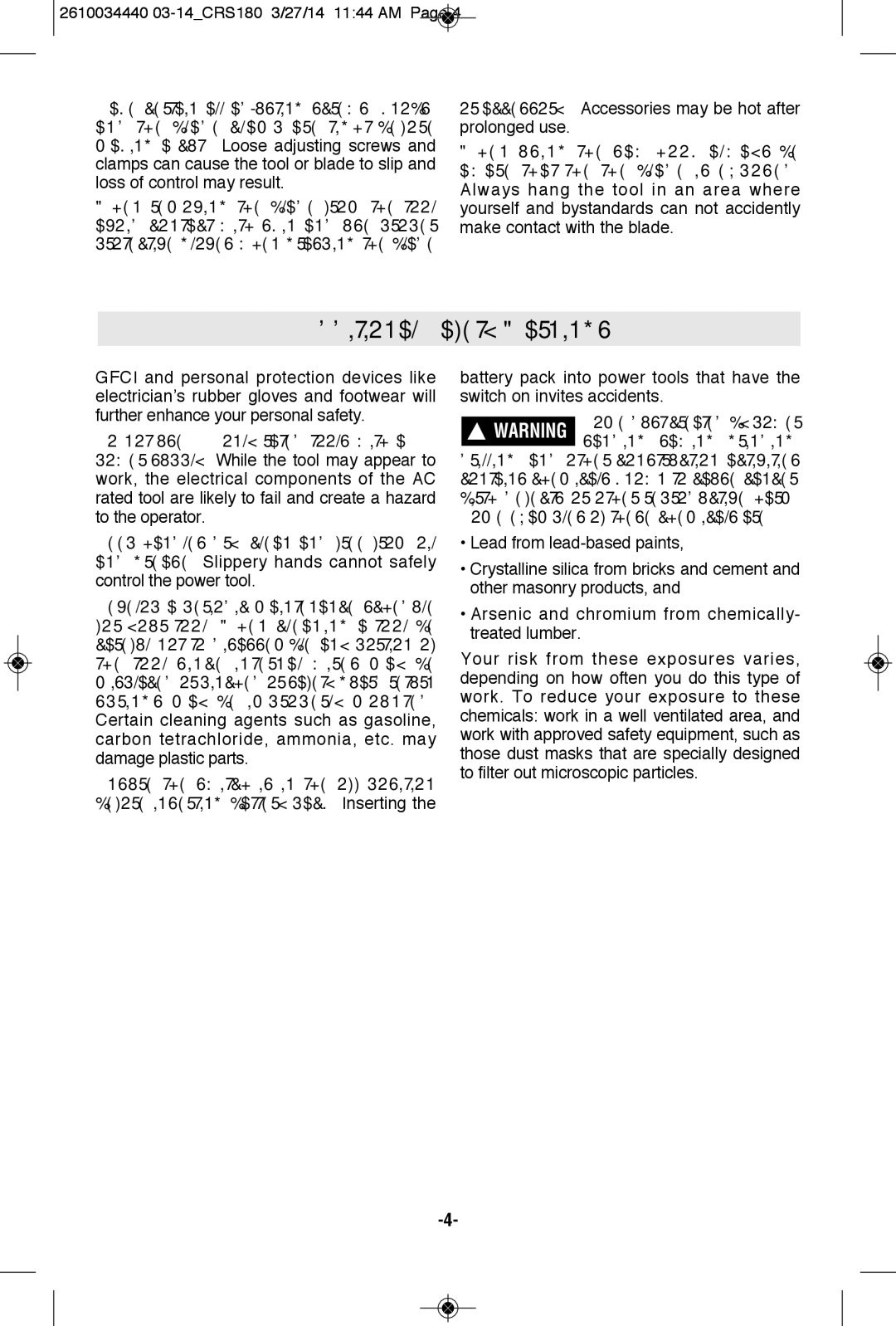
 2610034440
2610034440 03-14_CRS180 3/27/14 11:44 AM Page 4
4
Make certain all adjusting screws (knobs) and the blade clamp are tight before making a cut. Loose adjusting screws and clamps can cause the tool or blade to slip and loss of control may result.
When removing the blade from the tool avoid contact with skin and use proper protective gloves when grasping the blade
or accessory. Accessories may be hot after prolonged use.
When using the saw hook always be aware that the the blade is exposed. Always hang the tool in an area where yourself and bystandards can not accidently make contact with the blade.
Additional Safety Warnings
GFCI and personal protection devices like electrician’s rubber gloves and footwear will further enhance your personal safety.
Do not use AC only rated tools with a DC power supply. While the tool may appear to work, the electrical components of the AC rated tool are likely to fail and create a hazard to the operator.
Keep handles dry, clean and free from oil and grease. Slippery hands cannot safely control the power tool.
Develop a periodic maintenance schedule for your tool. When cleaning a tool be careful not to disassemble any portion of the tool since internal wires may be misplaced or pinched or safety guard return springs may be improperly mounted. Certain cleaning agents such as gasoline, carbon tetrachloride, ammonia, etc. may damage plastic parts.
Ensure the switch is in the off position before inserting battery pack. Inserting the
battery pack into power tools that have the switch on invites accidents.
Some dust created by power sanding, sawing, grinding, drilling, and other construction activities
contains chemicals known to cause cancer, birth defects or other reproductive harm. Some examples of these chemicals are:
•Lead from
•Crystalline silica from bricks and cement and other masonry products, and
•Arsenic and chromium from chemically- treated lumber.
Your risk from these exposures varies, depending on how often you do this type of work. To reduce your exposure to these chemicals: work in a well ventilated area, and work with approved safety equipment, such as those dust masks that are specially designed to filter out microscopic particles.
